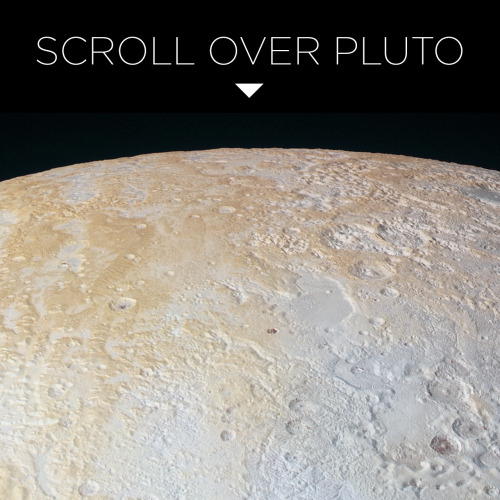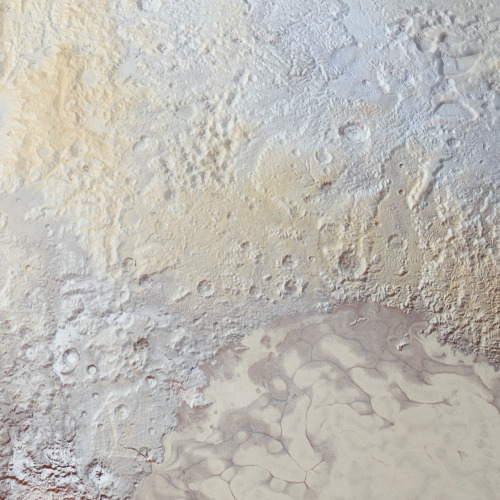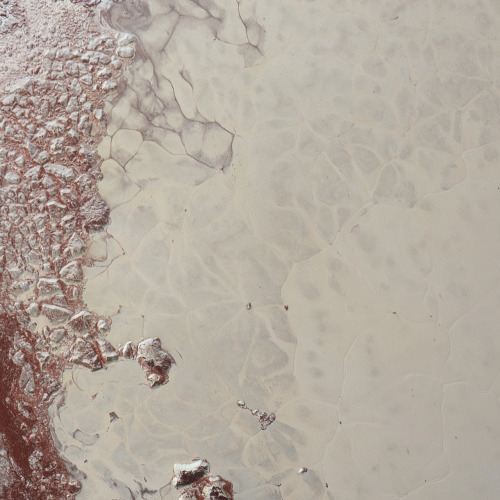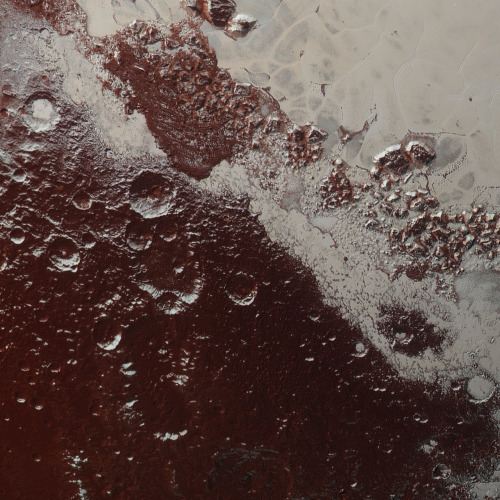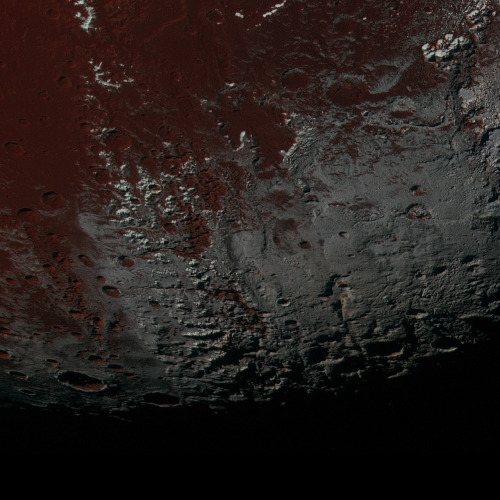The World's Oldest Story? Astronomers Say Global Myths About 'seven Sisters' Stars May Reach Back 100,000
The world's oldest story? Astronomers say global myths about 'seven sisters' stars may reach back 100,000 years https://phys.org/news/2020-12-world-oldest-story-astronomers-global.html

Holy shit, this is cool!
So many cultures call the Pleiades some variation of the "seven sisters" despite only having six visible stars. There only appear to be six because two of the stars are so close together as to appear as one.
The myths also mention one sister leaving or hiding to explain why there's only six. And based off observations and measurements, those two that are so close together used to be visibly separate. One literally has moved to hide.
And based off the similarities between the more commonly known Greek myth and the Aboriginal Australian myth, plus some other stuff, this myth could possibly even date back to when humanity still all resided in Africa!
More Posts from Fillthevoid-with-space and Others







The Moon of Lakes and Rivers - Saturn’s moon Titan
Saturn’s moon Titan is the only world - other than earth - that we know has liquid’s pooled on its surface. Unlike Earth, Titan has lakes of liquid methane - you wouldn’t want to swim in these lakes.
Titan’s “methane cycle” is analogy to Earth’s water cycle. In the 3rd and 4th images above we can see clouds of methane in Titan’s atmosphere. Ever since NASA’s Voyager 1 spacecraft, we have known that the gases that make up Titan’s brown colored haze were hydrocarbons. The atmosphere of Titan is largely nitrogen; minor components lead to the formation of methane–ethane clouds and nitrogen-rich organic smog.
It is thanks to the Cassini spacecraft that we now understand more about the climate of Titan - though we still understand very little!

The Cassini Space craft has mapped most of the Northern polar region of Titan, this is the region that contains almost all of Titan’s lakes. Cassini is systematically sweeping across Titan and mapping the surface of this strange alien world. The image below is an example of Cassini’s mapping process:

Credit: NASA/JPL/Cassini

TELLURIAN
[adjective]
1. of or characteristic of the earth or its inhabitants; terrestrial.
[noun]
2. an inhabitant of the earth.
3. Tellurion: an apparatus for showing the manner in which the diurnal rotation and annual revolution of the earth and the obliquity of its axis produce the alternation of day and night and the changes of the seasons.
Etymology: from Latin tellūs, “the earth” + -ian, "of, relating to, or resembling".
[Frank Moth - We Used To Live There]
I still highly recommend this good, beautiful web comic about love in space, and now it's all done! You can read it all.




The final three chapters are up. Read it now.
That’s it folks, On A Sunbeam is over. Though I am pondering a sequel.
Thank you all so much for following along.
Hubble Hones In on a Hypergiant's Home
NASA - Hubble Space Telescope patch. March 10, 2017
This beautiful Hubble image reveals a young super star cluster known as Westerlund 1, only 15,000 light-years away in our Milky Way neighborhood, yet home to one of the largest stars ever discovered. Stars are classified according to their spectral type, surface temperature, and luminosity. While studying and classifying the cluster’s constituent stars, astronomers discovered that Westerlund 1 is home to an enormous star. Originally named Westerlund 1-26, this monster star is a red supergiant (although sometimes classified as a hypergiant) with a radius over 1,500 times that of our sun. If Westerlund 1-26 were placed where our sun is in our solar system, it would extend out beyond the orbit of Jupiter.
Hubble orbiting Earth
Most of Westerlund 1’s stars are thought to have formed in the same burst of activity, meaning that they have similar ages and compositions. The cluster is relatively young in astronomical terms —at around three million years old it is a baby compared to our own sun, which is some 4.6 billion years old. For images and more information about Hubble, visit: http://hubblesite.org/ http://www.nasa.gov/hubble http://www.spacetelescope.org/ Image, Video, Credits: ESA/Hubble & NASA/Text Credits: European Space Agency/NASA/Karl Hille. Best regards, Orbiter.ch Full article

The Elephants Trunk in IC 1396 : Like an illustration in a galactic Just So Story, the Elephants Trunk Nebula winds through the emission nebula and young star cluster complex IC 1396, in the high and far off constellation of Cepheus. Of course, the cosmic elephants trunk is over 20 light-years long. This composite was recorded through narrow band filters that transmit the light from ionized hydrogen, sulfur, and oxygen atoms in the region. The resulting image highlights the bright swept-back ridges that outline pockets of cool interstellar dust and gas. Such embedded, dark, tendril-shaped clouds contain the raw material for star formation and hide protostars within the obscuring cosmic dust. Nearly 3,000 light-years distant, the relatively faint IC 1396 complex covers a large region on the sky, spanning over 5 degrees. via NASA
js
I mention New Horizons in today’s podcast but here’s some more up-to-date info!
Solar System: Things to Know This Week
Time for a little reconnaissance.

Our New Horizons spacecraft won’t arrive at its next destination in the distant Kuiper Belt—an object known as 2014 MU69—until New Year’s Day 2019, but researchers are already starting to study its environment thanks to a few rare observational opportunities this summer, including one on July 17. This week, we’re sharing 10 things to know about this exciting mission to a vast region of ancient mini-worlds billions of miles away.
1. First, Some Background

New Horizons launched on Jan. 19, 2006. It swung past Jupiter for a gravity boost and scientific studies in February 2007, and conducted a six-month reconnaissance flyby study of Pluto and its moons in summer 2015. The mission culminated with the closest approach to Pluto on July 14, 2015. Now, as part of an extended mission, the New Horizons spacecraft is heading farther into the Kuiper Belt.
2. A Kuiper Belt refresher

The Kuiper Belt is a region full of objects presumed to be remnants from the formation of our solar system some 4.6 billion years ago. It includes dwarf planets such as Pluto and is populated with hundreds of thousands of icy bodies larger than 62 miles (100 km) across and an estimated trillion or more comets. The first Kuiper Belt object was discovered in 1992.
3. That’s Pretty Far

When New Horizons flies by MU69 in 2019, it will be the most distant object ever explored by a spacecraft. This ancient Kuiper Belt object is not well understood because it is faint, small, and very far away, located approximately 4.1 billion miles (6.6 billion km) from Earth.
4. Shadow Play

To study this distant object from Earth, the New Horizons team have used data from the Hubble Space Telescope and the European Space Agency’s Gaia satellite to calculate where MU69 would cast a shadow on Earth’s surface as it passes in front of a star, an event known as an occultation.
5. An International Effort

One occultation occurred on June 3, 2017. More than 50 mission team members and collaborators set up telescopes across South Africa and Argentina, aiming to catch a two-second glimpse of the object’s shadow as it raced across the Earth. Joining in on the occultation observations were NASA’s Hubble Space Telescope and Gaia, a space observatory of the European Space Agency (ESA).
6. Piecing Together the Puzzle

Combined, the pre-positioned mobile telescopes captured more than 100,000 images of the occultation star that can be used to assess the Kuiper Belt object’s environment. While MU69 itself eluded direct detection, the June 3 data provided valuable and surprising insights. “These data show that MU69 might not be as dark or as large as some expected,” said occultation team leader Marc Buie, a New Horizons science team member from Southwest Research Institute in Boulder, Colorado.
7. One Major Missing Piece

Clear detection of MU69 remains elusive. “These [June 3 occultation] results are telling us something really interesting,” said New Horizons Principal Investigator Alan Stern, of the Southwest Research Institute. “The fact that we accomplished the occultation observations from every planned observing site but didn’t detect the object itself likely means that either MU69 is highly reflective and smaller than some expected, or it may be a binary or even a swarm of smaller bodies left from the time when the planets in our solar system formed.”
8. Another Opportunity

On July 10, the SOFIA team positioned its aircraft in the center of the shadow, pointing its powerful 100-inch (2.5-meter) telescope at MU69 when the object passed in front of the background star. The mission team will now analyze that data over the next few weeks, looking in particular for rings or debris around MU69 that might present problems for New Horizons when the spacecraft flies by in 2019. “This was the most challenging occultation observation because MU69 is so small and so distant,” said Kimberly Ennico Smith, SOFIA project scientist.
9. The Latest

On July 17, the Hubble Space Telescope will check for debris around MU69 while team members set up another “fence line” of small mobile telescopes along the predicted ground track of the occultation shadow in southern Argentina.
10. Past to Present

New Horizons has had quite the journey. Check out some of these mission videos for a quick tour of its major accomplishments and what’s next for this impressive spacecraft.
Make sure to follow us on Tumblr for your regular dose of space: http://nasa.tumblr.com

Light Echoes Used to Study Protoplanetary Disks : This illustration shows a star surrounded by a protoplanetary disk. A new study uses data from NASAs Spitzer Space Telescope and four ground-based telescopes to determine the distance from a star to the inner rim of its surrounding protoplanetary disk. Researchers used a method called photo-reverberation, also known as light echoes.
js
Ongoing Space Science Seeks to Keep Astronauts Healthy
ISS - Expedition 50 Mission patch. March 10, 2017 NASA is preparing for longer human journeys deeper into space and is exploring how to keep astronauts healthy and productive. The Expedition 50 crew members today studied space nutrition, measured their bodies and checked their eyes to learn how to adapt to living in space. The space residents also unloaded a cargo ship, worked on the Tranquility module and practiced an emergency simulation. The ongoing Energy experiment that ESA astronaut Thomas Pesquet collected urine samples for today seeks to define the energy requirements necessary to keep an astronaut successful during a space mission. Pesquet also joined NASA astronaut Peggy Whitson for body measurements to learn how microgravity affects body shape and impacts crew suit sizing. Commander Shane Kimbrough checked his eyes today with Whitson’s help and support from experts on the ground.
Image above: Astronaut Shane Kimbrough and Thomas Pesquet were pictured inside the cupola just after the SpaceX Dragon was captured Feb. 23, 2017. Image Credit: NASA. Kimbrough worked throughout the day before his eye checks and configured the Tranquility module for upcoming electronics and communications work. Cosmonaut Oleg Novitskiy continued unloading gear from the newly-arrived Progress 66 cargo ship. At the end of the day, Novitskiy joined Whitson and Pesquet for an emergency simulation with inputs from control centers in Houston and Moscow. Related links: Energy experiment: https://www.nasa.gov/mission_pages/station/research/experiments/397.html Body measurements: https://www.nasa.gov/mission_pages/station/research/experiments/1070.html Space Station Research and Technology: https://www.nasa.gov/mission_pages/station/research/index.html International Space Station (ISS): https://www.nasa.gov/mission_pages/station/main/index.html Image (mentioned), Text, Credits: NASA/Mark Garcia. Best regards, Orbiter.ch Full article
-
 yishidha liked this · 1 week ago
yishidha liked this · 1 week ago -
 blasphemousturducken reblogged this · 1 week ago
blasphemousturducken reblogged this · 1 week ago -
 sloppybench liked this · 1 week ago
sloppybench liked this · 1 week ago -
 racoonllama liked this · 1 week ago
racoonllama liked this · 1 week ago -
 mgd108 liked this · 1 week ago
mgd108 liked this · 1 week ago -
 deadnettlewitch liked this · 1 week ago
deadnettlewitch liked this · 1 week ago -
 cosmically-winter liked this · 1 week ago
cosmically-winter liked this · 1 week ago -
 74ellebelle liked this · 1 week ago
74ellebelle liked this · 1 week ago -
 one-girly-geek liked this · 1 week ago
one-girly-geek liked this · 1 week ago -
 fishwithlegz liked this · 1 week ago
fishwithlegz liked this · 1 week ago -
 0queenstarlet0 liked this · 1 week ago
0queenstarlet0 liked this · 1 week ago -
 apogunia liked this · 1 week ago
apogunia liked this · 1 week ago -
 sovereignsolace liked this · 1 week ago
sovereignsolace liked this · 1 week ago -
 funfey liked this · 1 week ago
funfey liked this · 1 week ago -
 theadorableoccult reblogged this · 1 week ago
theadorableoccult reblogged this · 1 week ago -
 coconutzinco liked this · 1 week ago
coconutzinco liked this · 1 week ago -
 okra-sama reblogged this · 1 week ago
okra-sama reblogged this · 1 week ago -
 tototoaba liked this · 1 week ago
tototoaba liked this · 1 week ago -
 hoka-inumuta reblogged this · 1 week ago
hoka-inumuta reblogged this · 1 week ago -
 thehiccupwhisperer reblogged this · 1 week ago
thehiccupwhisperer reblogged this · 1 week ago -
 sobing reblogged this · 1 week ago
sobing reblogged this · 1 week ago -
 moongazinghare1111 reblogged this · 1 week ago
moongazinghare1111 reblogged this · 1 week ago -
 moongazinghare1111 liked this · 1 week ago
moongazinghare1111 liked this · 1 week ago -
 howlsmelodramaticass liked this · 1 week ago
howlsmelodramaticass liked this · 1 week ago -
 athgalla liked this · 1 week ago
athgalla liked this · 1 week ago -
 miainaction94 reblogged this · 1 week ago
miainaction94 reblogged this · 1 week ago -
 miainaction94 liked this · 1 week ago
miainaction94 liked this · 1 week ago -
 4rchry liked this · 1 week ago
4rchry liked this · 1 week ago -
 feestestsheetintheweest liked this · 1 week ago
feestestsheetintheweest liked this · 1 week ago -
 spacemantis liked this · 1 week ago
spacemantis liked this · 1 week ago -
 tehenrique reblogged this · 1 week ago
tehenrique reblogged this · 1 week ago -
 dahliaafterdark liked this · 1 week ago
dahliaafterdark liked this · 1 week ago -
 secousses liked this · 1 week ago
secousses liked this · 1 week ago -
 occipita reblogged this · 1 week ago
occipita reblogged this · 1 week ago -
 delicious-anomalocaris reblogged this · 1 week ago
delicious-anomalocaris reblogged this · 1 week ago -
 alternativeballerina reblogged this · 1 week ago
alternativeballerina reblogged this · 1 week ago -
 alternativeballerina liked this · 1 week ago
alternativeballerina liked this · 1 week ago -
 holleywoodlandgestures liked this · 1 week ago
holleywoodlandgestures liked this · 1 week ago -
 sapphire---art liked this · 1 week ago
sapphire---art liked this · 1 week ago -
 futchdelight reblogged this · 1 week ago
futchdelight reblogged this · 1 week ago -
 karlachsburningbush reblogged this · 1 week ago
karlachsburningbush reblogged this · 1 week ago -
 karlachsburningbush liked this · 1 week ago
karlachsburningbush liked this · 1 week ago -
 razette liked this · 1 week ago
razette liked this · 1 week ago -
 insert-cliche reblogged this · 1 week ago
insert-cliche reblogged this · 1 week ago -
 davidtellez reblogged this · 1 week ago
davidtellez reblogged this · 1 week ago -
 davidtellez liked this · 1 week ago
davidtellez liked this · 1 week ago -
 wisequietness liked this · 1 week ago
wisequietness liked this · 1 week ago -
 coolfreakingwizards reblogged this · 1 week ago
coolfreakingwizards reblogged this · 1 week ago
A podcast project to fill the space in my heart and my time that used to be filled with academic research. In 2018, that space gets filled with... MORE SPACE! Cheerfully researched, painstakingly edited, informal as hell, definitely worth everyone's time.
243 posts
